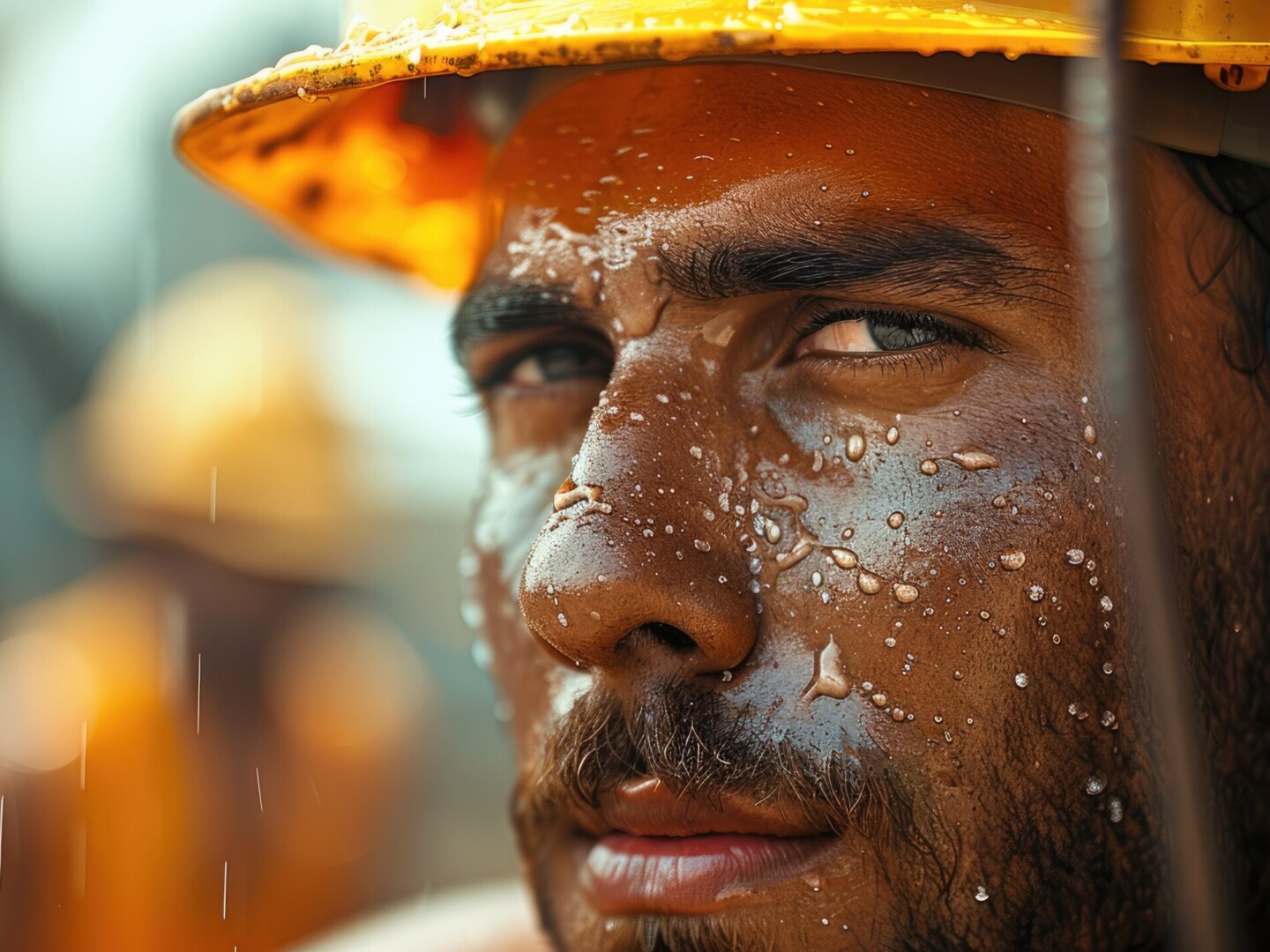


Every April 28th, the International Labour Organisation (ILO) observes World Day for Health and Safety at Work, advocating for healthy and safe workplaces worldwide. In 2022, the ILO reinforced this mission by enshrining a healthy and safe work environment as a fundamental right and principle. This year’s theme focuses on “The impacts of climate change on occupational safety and health,” underscoring the urgent need to address climate-related challenges in workplace safety.
As we commemorate World Day for Safety and Health at Work, it’s imperative to delve into the evolving landscape of workplace safety in the face of climate change. We sat down with industry experts to discuss the intersection of climate challenges and occupational health, and how technology and innovative solutions are shaping the future of workplace safety.

Dale Jones, Technical Director at Alcumus SafeContractor, shares his insights on the trends in technology addressing emerging risks associated with climate change and workplace safety:
Q1: Are there trends in technology addressing the emerging risks associated with climate change and workplace safety?
Dale Jones: Absolutely. As we observe World Day for Safety and Health at Work 2024, it’s paramount to acknowledge how climate change is reshaping workplace safety across various industries. Rising temperatures, intensified storms, and other climate-related phenomena pose significant risks to workers’ health and safety. Fortunately, technology emerges as a vital ally in mitigating these risks. Innovative solutions such as IoT sensors for early warning systems, wearable monitors tracking environmental factors, and AI-powered analytics for safety data analysis offer promising avenues for protecting workers. However, it’s crucial to recognise that technology alone isn’t a panacea; it requires proper implementation, skilled personnel, and ethical considerations. By integrating technology with traditional safety practices, we can create resilient workplaces prepared to confront the challenges of climate change.
Q2: How can our Alcumus SafeContractor solutions contribute to addressing the impacts of climate change on occupational safety and health within organisations?
Dale Jones: Our Alcumus SafeContractor solutions play a pivotal role in helping organisations navigate the impacts of climate change on occupational safety and health. SafeContractor and SafeSupplier offer robust tools to assess suppliers’ capabilities, focusing not only on health and safety certification but also on sustainability metrics, including carbon emissions. This holistic approach enables organisations to gain insights into their supply chain’s maturity and progress on sustainability initiatives. By leveraging these insights, businesses can proactively address climate-related risks within their supply chains, staying ahead of legislative changes and improving overall practices to ensure a safer and more sustainable future for workers worldwide.

Rebecca Sperti, SVP Commercial, delves into the profound implications of climate change on occupational safety within an organisation’s supply chain.
Q1: How do you perceive climate change affecting occupational safety within an organisation’s supply chain?
Rebecca Sperti: Climate change presents significant challenges to occupational safety within organisations’ supply chains across various sectors. For instance, in industries like construction, where outdoor workers engage in physically demanding tasks under direct sunlight, rising temperatures increase the risk of heat-related illnesses such as heat stress and heat stroke. Moreover, prolonged exposure to higher levels of UV radiation may also elevate the prevalence of skin cancer among outdoor workers. Similarly, indoor workers, especially those involved in high industrial heat production, face challenges in maintaining adequate cooling systems to mitigate the impacts of climate change. Additionally, extreme weather conditions worldwide can create hazardous working environments and disrupt the availability of goods and materials, further complicating supply chain operations. It’s imperative for organisations to recognise these challenges and implement strategies to safeguard workers and maintain operational resilience in the face of climate change.

Ben Jenkins, VP of Product, sheds light on how our solutions contribute to addressing the impacts of climate change on occupational safety and health within organisations:
Q1: How can our Alcumus SafeContractor solutions contribute to addressing the impacts of climate change on occupational safety and health within organisations?
Ben Jenkins: SafeContractor and SafeSupplier offer powerful tools for evaluating suppliers. We’re talking about checking out their health and safety credentials and sustainability efforts, including how they handle carbon emissions. And hey, as the Product VP, I can tell you that SafeContractor goes that extra mile by adding sustainability into its health and safety checks. Meanwhile, SafeSupplier doesn’t just look at the main chain; it checks out offsite chains too. This gives us a big-picture view of how mature and sustainable our supply chain really is. Subscribers love it because they can stay ahead of the curve, see what legislative changes might be coming, and tweak their practices to match.

Gemma Lynch, SVP of Global Strategic Accounts, highlights the essential climate change considerations for clients.
Q1. Have there been any shifts in client expectations regarding climate change considerations in contractor management? If so, how are we addressing them?
Gemma Lynch: Our clients continue to be super focussed on the impact they and their supply chains have on the planet. It’s a problem that we all need to take responsibility for if we have any chance of reversing it. We are helping our clients by ensuring that the suppliers they work with, both on site and offsite, have the appropriate policies and procedures in place to minimise this impact – our expert team of in-house auditors give our clients piece of mind and vital insight into their supply chain enabling informed decisions about who they work with. We also work in partnership with our clients and their suppliers by providing helpful tools and insights to enable the suppliers to improve in key areas of safety and sustainability. It’s a win win!
Addressing climate change’s impacts necessitates collaborative efforts across governments, businesses, trade unions, and civil society. By pooling resources and expertise, stakeholders can develop strategies to enhance climate resilience in the workplace, ensuring a safer and more sustainable future for all.
On World Day of Safety and Health 2024, let’s reaffirm our commitment to protecting workers from the effects of climate change. Prioritising safety and health in a changing climate fosters resilient workplaces and pave the way for a healthier future for everyone.

Gary Broadley, Health and Safety Technical Manager, offers insights into the evolving landscape of workplace safety regulations influenced by climate change.
Q1. Are there any emerging health and safety regulations specifically targeting climate-related hazards in the workplace?
Gary Broadley: While there aren’t standalone regulations solely focused on climate-related hazards in the UK, existing regulations encompass aspects that indirectly address these concerns. As global attention shifts towards climate change impacts, regulatory bodies like the Health and Safety Executive (HSE) are increasingly scrutinising these issues.
Key areas and regulations addressing climate-related hazards:
Adaptation and resilience strategies:
Employers are urged to develop tailored strategies, including risk assessments, training, and collaboration with stakeholders, to address climate-related risks effectively.
As climate change continues to shape workplaces, a combination of existing regulations, environmental laws, and voluntary initiatives will guide safety practices. Alcumus SafeWorkforce provides tailored support and assessments to ensure compliance and employee well-being.
Every business has unique needs, and SafeWorkforce offers customized solutions following thorough site inspections, guaranteeing the highest standards of health and safety.